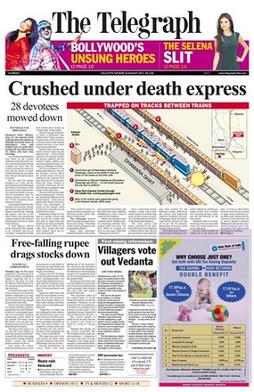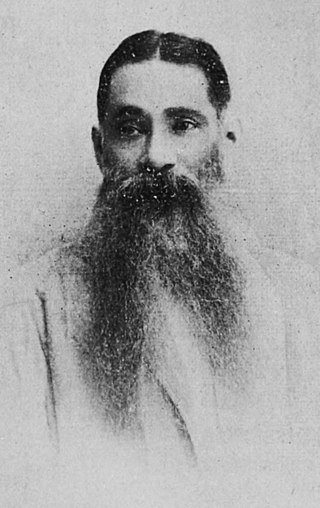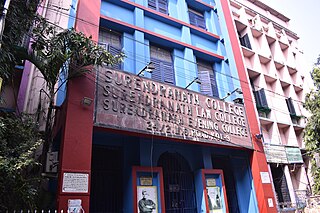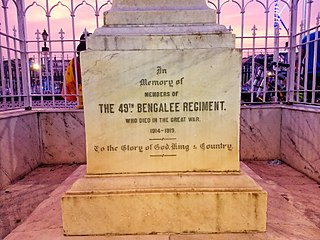This article relies largely or entirely on a single source .(March 2023) |
The Bengalee was an English language newspaper based in Calcutta (Kolkata), British India.
This article relies largely or entirely on a single source .(March 2023) |
The Bengalee was an English language newspaper based in Calcutta (Kolkata), British India.
The Bengalee was founded in 1862 by Girish Chandra Ghosh as an English language newspaper based in Kolkata. The newspaper had a nationalist editorial stand. Surendranath Banerjee served as its editor. It was the highest circulated weekly newspaper in the late 19th and early 20th century. Following the Surat Split in the Indian National Congress, the newspaper took a stand for the moderate fraction of the Congress. The paper adapted moderate policies on movements like the Swadeshi movement which reduced circulation and decreased the popularity of the newspaper. The newspaper circulation further declined following the death of Surendranath Banerjee in 1925. The newspaper developed into two editions, the morning edition was called The Bengalee, which was for metropolitan area, while the evening edition for rural areas was called Calcutta Evening News in 1931. The Bengalee newspaper closed down that year. In 1932, the two editions were consolidated and renamed The Star of India. [1]

West Bengal is a state in the eastern portion of India. It is situated along the Bay of Bengal, along with a population of over 91 million inhabitants within an area of 88,752 km2 (34,267 sq mi) as of 2011. The population estimate as of 2023 is 102,552,787. West Bengal is the fourth-most populous and thirteenth-largest state by area in India, as well as the eighth-most populous country subdivision of the world. As a part of the Bengal region of the Indian subcontinent, it borders Bangladesh in the east, and Nepal and Bhutan in the north. It also borders the Indian states of Jharkhand, Odisha, Bihar, Sikkim and Assam. The state capital is Kolkata, the third-largest metropolis, and seventh largest city by population in India. West Bengal includes the Darjeeling Himalayan hill region, the Ganges delta, the Rarh region, the coastal Sundarbans and the Bay of Bengal. The state's main ethnic group are the Bengalis, with the Bengali Hindus forming the demographic majority.

Kolkata is the capital and largest city of the Indian state of West Bengal. It lies on the eastern bank of the Hooghly River, 80 km (50 mi) west of the border with Bangladesh. It is the primary financial and commercial center of eastern and northeastern India. Kolkata is the seventh most populous city of India with an estimated city proper population of 4.5 million (0.45 crore). It is the centre of the Kolkata Metropolitan Region, one of the most populous metropolitan areas in the world with a population of over 15 million residents. Kolkata is the de facto cultural capital of India and historically and culturally significant city in the historic region of Bengal. It is the second largest Bengali-speaking city in the world. It has the highest number of Nobel laureates among all cities in India.

The Telegraph is an Indian English daily newspaper founded and continuously published in Kolkata since 7 July 1982. It is published by the ABP Group and the newspaper competes with The Times of India. The newspaper is the eighth most-widely read English language newspaper in India as per Indian Readership Survey (IRS) 2019.

The University of Calcutta is a public state university located in Kolkata, West Bengal, India. It has 151 affiliated undergraduate colleges and 16 institutes in Kolkata and nearby areas. It was established on 24 January 1857 and is the oldest multidisciplinary university of Indian Subcontinent and South East Asian Region. Today, the university's jurisdiction is limited to a few districts of West Bengal, but at the time of its establishment it had a catchment area ranging from Kabul to Myanmar. Within India, it is recognized as a "Five-Star University" and accredited an "A" grade by the National Assessment and Accreditation Council (NAAC).

[ Publisher = Vineet Gupta

The first Partition of Bengal (1905) was a territorial reorganization of the Bengal Presidency implemented by the authorities of the British Raj. The reorganization separated the largely Muslim eastern areas from the largely Hindu western areas. Announced on 16 July 1905 by Lord Curzon, then Viceroy of India, and implemented West Bengal for Hindus and East Bengal for Muslims, it was undone a mere six years later. The nationalists saw the partition as a challenge to Indian nationalism and as a deliberate attempt to divide the Bengal Presidency on religious grounds, with a Muslim majority in the east and a Hindu majority in the west. The Hindus of West Bengal complained that the division would make them a minority in a province that would incorporate the province of Bihar and Orissa. Hindus were outraged at what they saw as a "divide and rule" policy, even though Curzon stressed it would produce administrative efficiency. The partition animated the Muslims to form their own national organization along communal lines. To appease Bengali sentiment, Bengal was reunited by King George V in 1911, in response to the Swadeshi movement's riots in protest against the policy.

Bina Das was an Indian revolutionary and nationalist from West Bengal.

SirSurendranath Banerjee, often known as Rashtraguru was Indian nationalist leader during the British Rule. He founded a nationalist organization called the Indian National Association to bring Hindus and Muslims together for political action. He was one of the founding members of the Indian National Congress. Surendranath supported Montagu–Chelmsford Reforms, unlike Congress, and with many liberal leaders he left Congress and founded a new organisation named Indian National Liberation Federation in 1919.

The Indian Association was the first avowed nationalist organization founded in British India by Surendranath Banerjee and Ananda Mohan Bose in 1876. The objectives of this Association were "promoting by every legitimate means the political, intellectual and material advancement of the people". The Association attracted educated Indians and civics leaders from all parts of the country, and became an important forum for India's aspirations for independence. It later merged with the Indian National Congress.

Womesh Chunder Bonnerjee was an Indian barrister. He was a co-founder and the first president of Indian National Congress.

Surendranath College is an undergraduate college affiliated to the University of Calcutta, in Kolkata, India. It was founded in 1884 by the nationalist leader and scholar Surendranath Banerjee. It offers undergraduate and postgraduate level courses in various arts, commerce and science subjects.

Amrita Bazar Patrika was one of the oldest daily newspapers in India. Originally published in Bengali script, it evolved into an English format published from Kolkata and other locations such as Cuttack, Ranchi and Allahabad. The paper discontinued its publication in 1991 after 123 years of publication. Its sister newspaper was the Bengali-language daily newspaper Jugantar, which remained in circulation from 1937 till 1991.

Janbazar is a neighbourhood of Central Kolkata, in Kolkata district in the Indian state of West Bengal. The two century-old house of Rani Rashmoni, the central attraction in Janbazar, is still used by descendants in the family.

Taltala is a neighbourhood in Central Kolkata, in Kolkata district in the Indian state of West Bengal. One of the oldest neighbourhoods of the metropolis, it has a police station on its own name.

Surendranath Law College formerly known as Ripon College) is an postgraduate law college affiliated with the University of Calcutta. It was established in Kolkata in the Indian state of West Bengal in 1885 by a trust formed by the nationalist leader, scholar and educationist Surendranath Banerjee, a year after he founded Surendranath College. This is now regarded one of the oldest Law college of British India.
The Comrade was a weekly English-language newspaper that was published and edited by Mohammad Ali Jauhar between 1911 and 1914.

Krishna Kumar Mitra (1852–1936) was an Indian freedom fighter, journalist and leader of the Brahmo Samaj. He is remembered for his contributions to the Swadeshi movement through his journal Sanjibani.

Sealdah is a neighbourhood of Central Kolkata in Kolkata district in the Indian state of West Bengal.
Sir Ramaswami Srinivasa Sarma was an Indian journalist and politician. He was the first Indian journalist to be knighted.

Bangali Platoon or Bengalee Regiment was a regiment of Bengali soldiers raised during the First World War with Lt. S. G. Taylor as a Regiment Commander. At the beginning of the First World War (1914–1918). So that time many non-combatant soldiers and skilled and unskilled laborers were also recruited from Bengal. In middle 1916, the British Government decided to create a regiment of Bengali soldiers. At first, it was called Bengali Double Company. These Double Companies, each consisting of 228 soldiers, are thought to annex with Indian Army as a regiment. The Bengali Double Company raised the first Bengali Battalion on 26 June 1917. It was named the 49th Bengalee regiment or briefly the 49th Bengalee. It was disbanded in 1920.